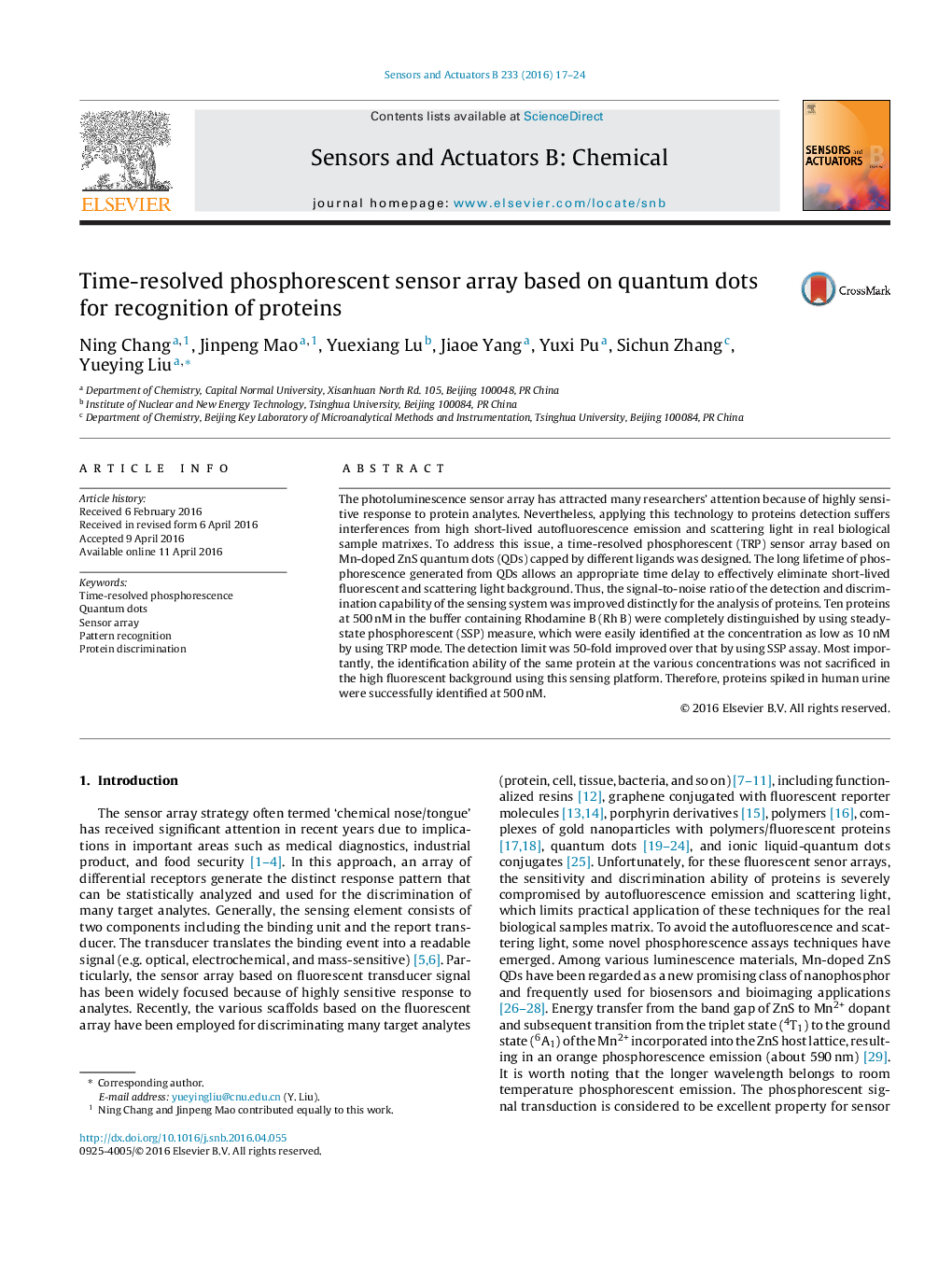| Article ID | Journal | Published Year | Pages | File Type |
|---|---|---|---|---|
| 7143453 | Sensors and Actuators B: Chemical | 2016 | 8 Pages |
Abstract
The photoluminescence sensor array has attracted many researchers' attention because of highly sensitive response to protein analytes. Nevertheless, applying this technology to proteins detection suffers interferences from high short-lived autofluorescence emission and scattering light in real biological sample matrixes. To address this issue, a time-resolved phosphorescent (TRP) sensor array based on Mn-doped ZnS quantum dots (QDs) capped by different ligands was designed. The long lifetime of phosphorescence generated from QDs allows an appropriate time delay to effectively eliminate short-lived fluorescent and scattering light background. Thus, the signal-to-noise ratio of the detection and discrimination capability of the sensing system was improved distinctly for the analysis of proteins. Ten proteins at 500Â nM in the buffer containing Rhodamine B (Rh B) were completely distinguished by using steady-state phosphorescent (SSP) measure, which were easily identified at the concentration as low as 10Â nM by using TRP mode. The detection limit was 50-fold improved over that by using SSP assay. Most importantly, the identification ability of the same protein at the various concentrations was not sacrificed in the high fluorescent background using this sensing platform. Therefore, proteins spiked in human urine were successfully identified at 500Â nM.
Related Topics
Physical Sciences and Engineering
Chemistry
Analytical Chemistry
Authors
Ning Chang, Jinpeng Mao, Yuexiang Lu, Jiaoe Yang, Yuxi Pu, Sichun Zhang, Yueying Liu,
